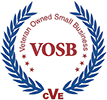
If you are interested in getting the most return on investment (ROI) from your sales and marketing budget, you will want to use these best practices to develop your marketing plan, as well as your marketing communications plan.
- Really understanding who your best customers are, so you could easily profile others just like them.
- Getting customers and vendors involved in promoting how well your products or services meet their needs, so your marketing campaigns become more effective and credible.
- Keeping those conversations going for leads that are not quite ready to buy through nurture marketing.
Most of organizations that I have worked with have received the highest payback from them. When you examine your existing plan or need to create a new one, keep these marketing planning and communication best practices in mind.
How to target your best customers
In this blog, we will discuss how to focus on identifying your best customers and prospects for marketing, which is the first step in customer analysis and market research. Although, most companies can identify their top two or three markets, it becomes much more difficult after that.
Build profiles by demographics
According to a recent study, What’s Working in Lead Generation (2007 RainToday.com & Wellesley Hills Group, LLC) and in our experience, there’s a direct correlation between companies that know exactly whom they target and how well they can generate leads. The profiles should include demographics, account potential and decision makers from paid sources (big data) such as:
Or from free sources such as:
- Company websites
- Industry associations
- Social media (LinkedIn, Facebook, etc.)
One client, a toner remanufacturer, who correlated that data and imported it into their CRM database, grew their revenues 28% in a down economy year. According to Tom Senecal, president of Laser’s Resource,
Improving sales effectiveness is a critical success factor for business growth. ”
It enabled them to determine their true market potential, focus their selling strategy and boost sales by 28%. The best companies keep this information refreshed, annually. Others load it once and depend on their reps to keep it current.
Calculate potential by Lifetime Value (LTV)
Although most accounting systems do not provide this information directly, you can calculate it. When you envision levels of customers and estimate their value, it often becomes an ‘Aha’ moment to most clients and business development staff. What traits make each customer level different? This is where the detailed demographics are helpful.
Lifetime value increases with the depth of the relationship
It is a tough exercise for some owners because the average turnover or churn rate is 20% per year – meaning in five years, all of your customers have disappeared unless replenished by marketing and sales efforts. Insurance companies appear to have mastered this because they measure their retention rates and have processes in place to actively cultivate those relationships.
Sometimes, this raises the question of how much to spend to acquire new customers. Loyal customers cost 7-16 times less to retain. Some companies can spend from one month to up to one year of profits to acquire a new customer.
Identify buyer personas
You will be more successful if you can identify the actual names and titles of decision makers within the target organizations. Hierarchy and influence are not always the same. I use the buying influencer terms from Miller Heiman – Blue Sheet: Buying Influences for buyer personas.
- Economic – gives final approval
- User – actually uses (or supervises the use of)
- Technical – screens out who can play
- Coach – guides you in the sale, must be developed and may exist outside of the target account (e.g. colleague, referral source or board member)
Most CRM systems that have an Opportunity Management module allow you note and track these relationships.
Assess Each Target Market
Some organizations go through a more formal Strengths, Weaknesses, Opportunities and Threats (SWOT) Analysis, but this is one of the critical steps to prepare first. Once you have identified your top markets to target, you need to understand them:
- What do they need and value?
- Who are your top clients in this segment? Or what are they like?
- Which ones are poised for growth or have untapped potential (share of wallet)?
- What marketing activities have worked well in the past?
- How did your get these clients? Did someone refer them and can you continue to build that relationship?
- List competitors to find how they vary by market segment, product or service.
According to our planning model, each segment has its own set of expectations and needs. You’ll need to build your strategies accordingly. It may be possible to serve too many segments at one time. The various needs may be too much to support because of capital or personnel requirements.
In our next blog, we’ll examine promotional efforts such as marketing communications and campaign planning. Should you need help with identifying your best customers or targeting ones just like them, contact us or find out how in our Marketing Planning and Marketing Communication Workshops.

This blog article was based on my presentation, Developing Today’s Practical Marketing Plan, given at the Veteran-Owned Business Conference in Grand Rapids on October 29, 2014.
Details and photos of the conference are available at: http://www.vetbizcentral.org/.
We consider many of the same factors to focus our sales efforts within electronic manufacturing service industry. An organized approach most often leads to success!